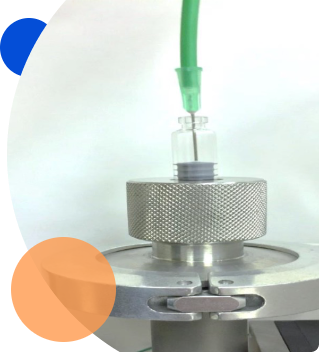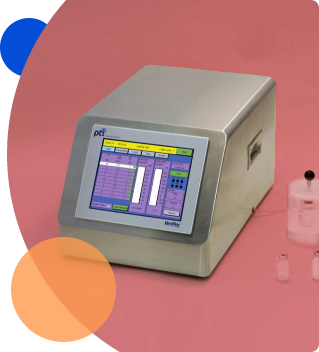Container Closure Integrity (CCI)
Assess closure integrity of the system with container development and CCIT testing.
We offer Container Closure Integrity (CCI) techniques and analysis for various packaging and delivery systems to meet the needs of pharmaceutical, biotech and medical device manufacturers.
Our CCI analytical group has the technology, expertise and insight to provide a thorough understanding of container closure systems. Our programs extend from package development to market launch through lifecycle management. In addition, we can support your sample testing needs for cold storage CCI testing.
ZebraSci has a complete and comprehensive understanding of packaging components and delivery systems that are commercially available for drug-device combination products.

If you need more information, contact us
Request Consultation
What is your request?
VIEW CAPABILITIES
High Voltage Leak Detection (HVLD)
High Voltage Leak Detection (HVLD)
- Deterministic test method to assess container closure integrity
- Package exposed to low amperage current
- Changes in package resistance are caused by liquid product contact with a defect site
- Leak path results in a spike in current passing through the package

Helium leak detection
Helium leak detection
- Deterministic test method to assess container closure integrity
- Sample placed in chamber and subjected to vacuum. Once stabilized, pressure inside chamber is monitored
- Pressure differential drives headspace through defect pathways into test chamber
- Most sensitive CCI technology available to ZebraSci customers used for assessing inherent integrity on empty packages

Vaccum decay leak detection
Vaccum decay leak detection
- Deterministic test method to assess container closure integrity
- Sample placed in chamber and subjected to vacuum. Once stabilized, pressure inside chamber is monitored
- Pressure differential drives headspace through defect pathways into test chamber
- Limit of detection ≈ 5μm

Dye ingress
Dye ingress
Probabilistic test method that is no longer a recommended technology to assess container closure integrity.
Samples are placed in a blue dye bath. The entire bath is moved into a vacuum chamber which is held at a predetermined pressure for a period of time. Once that time is up, the pressure in the chamber is returned to atmospheric pressure and the blue dye bath is removed. The samples are then visually inspected to confirm presence of blue dye (or no dye).
This service is available for use upon customer request; however, it is not recommended as regulatory bodies are moving away from dye leak ingress testing.

Headspace analysis
Headspace analysis
- Assesses the partial pressure of a given gas molecule in the headspace of primary container to determine if changes occur over time, signifying a potential leak in the system
- Utilizes a laser diode to measure light absorption within the container which is determined as a function of gas concentration and pressure
- Measurements can be taken over time to assess potential changes in partical pressure of a given gas molecule
- This technology can be very informative in cold storage temperature conditions utilizing CO2 or Nitrogen as tracer gases to ensure that CCI is maintained
